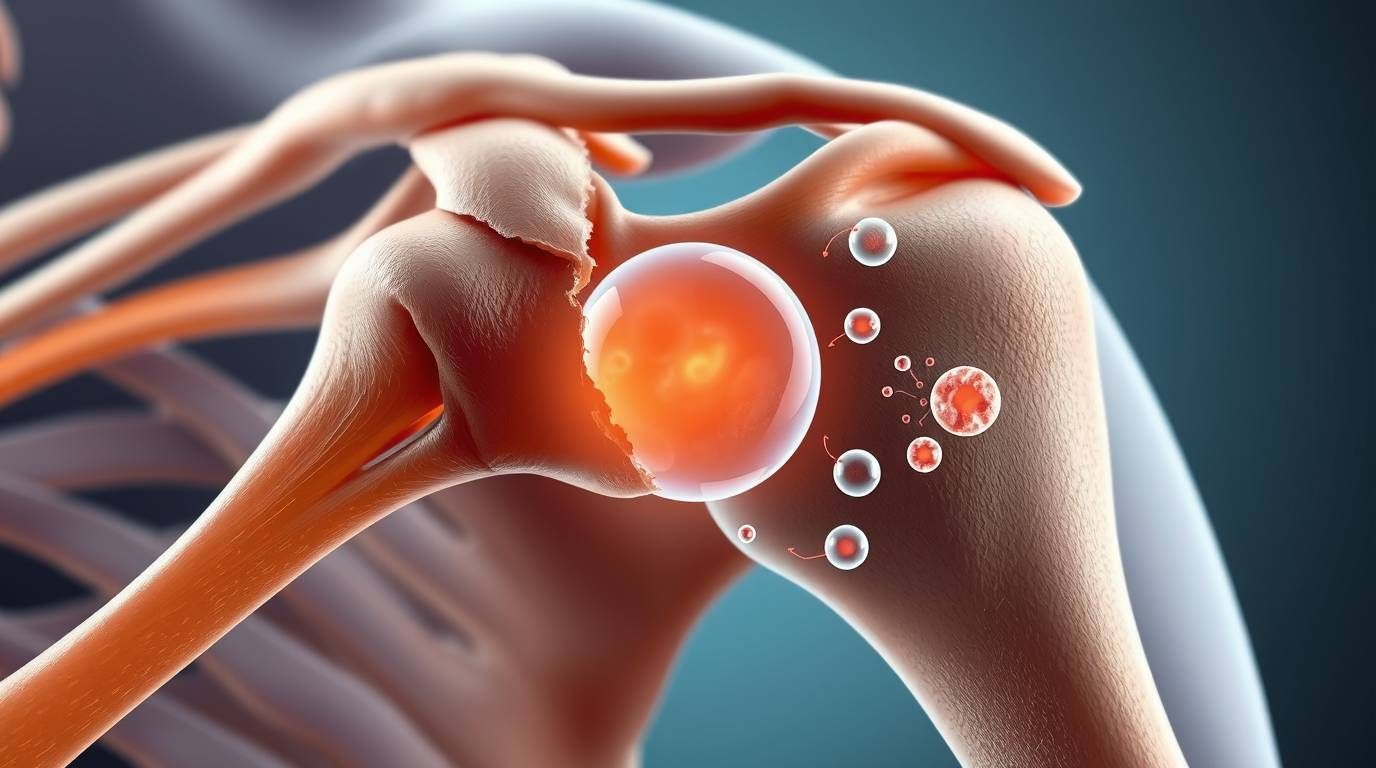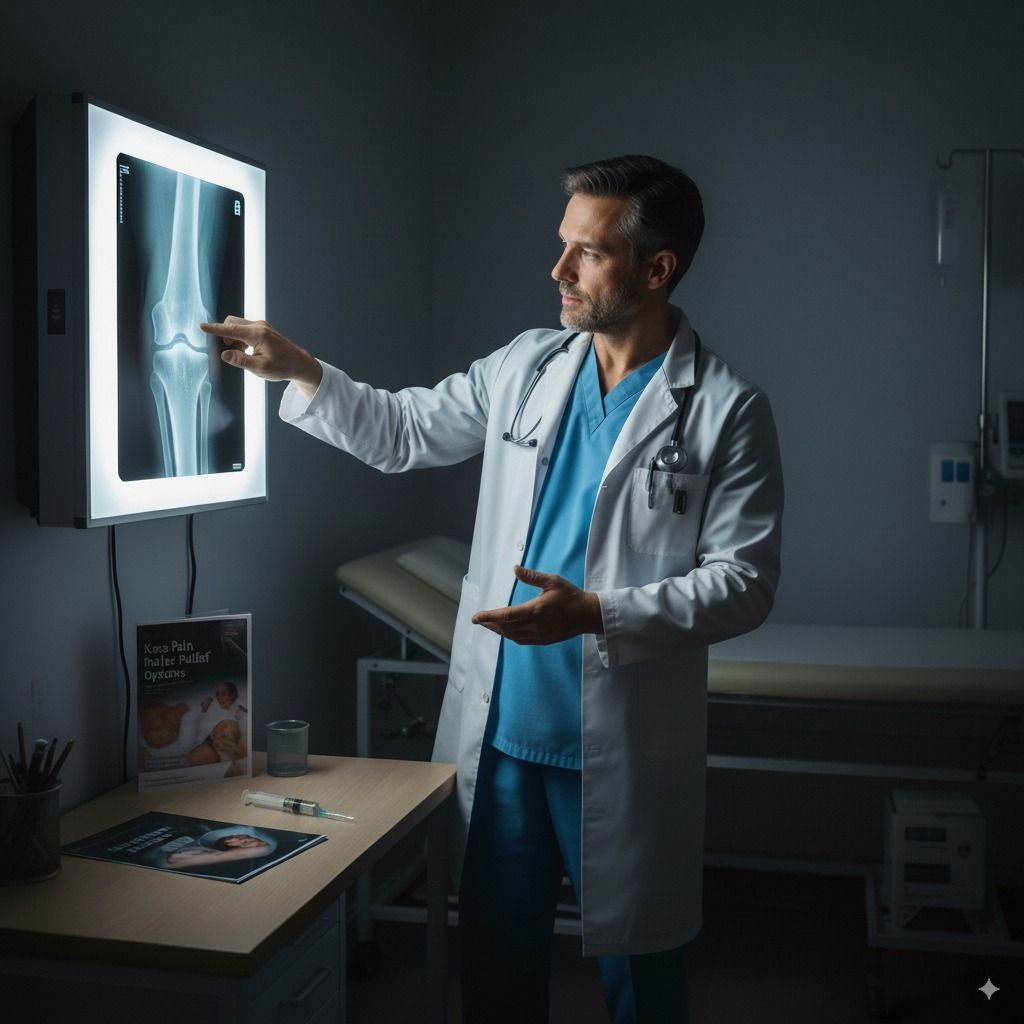Shoulder Rotator Cuff Injuries: When to Choose Stem Cell Therapy Over Surgery
VINMED
Compare Treatment Options: Avoid Surgery with Advanced Stem Cell Therapy for Rotator Cuff Tears

If you're dealing with a painful rotator cuff injury, you're likely weighing your treatment options and wondering whether stem cell therapy or surgery is the right choice for you. The decision between these two approaches isn't always straightforward, but understanding the key factors can help you make an informed choice that aligns with your lifestyle, recovery goals, and long-term health.
Understanding Rotator Cuff Injuries
Your rotator cuff is a complex network of four muscles and tendons that provide stability and enable the incredible range of motion in your shoulder joint. These include the supraspinatus, infraspinatus, subscapularis, and teres minor. When these tendons become torn due to injury, overuse, or natural wear and tear, the result is often persistent pain, weakness, and limited mobility that can significantly impact your daily life.
Common causes of rotator cuff injuries include:
- Repetitive overhead motions (swimming, tennis, painting)
- Sudden heavy lifting or jerking motions
- Falls or direct impact to the shoulder
- Age-related degeneration and wear
When to Consider Stem Cell Therapy
Stem cell therapy offers a promising alternative to surgery for many patients with rotator cuff injuries. This regenerative medicine approach uses your body's own healing mechanisms to repair damaged tissue naturally.
Ideal Candidates for Stem Cell Therapy:
- Partial-Thickness Tears: If your
MRI shows a partial rotator cuff tear, stem cell therapy can be highly effective. These tears haven't completely severed the tendon, making them excellent candidates for regenerative healing.
- Failed Conservative Treatment: You've tried rest, physical therapy, cortisone injections, and anti-inflammatory medications for 2-3 months without significant improvement.
- Active Lifestyle Goals: You want to return to sports, heavy lifting, or physically demanding activities without the extended downtime that surgery requires.
- Age Considerations: Patients under 60 typically respond better to stem cell therapy, as younger bodies have more robust regenerative capabilities.
- Avoiding Surgery Risks: You prefer to avoid the potential complications associated with surgery, including infection, nerve damage, or anesthesia risks
- Multiple Joint Issues: If you have other joint problems that could benefit from stem cell therapy, treating multiple areas simultaneously can be cost-effective.
When Surgery May Be the Better Choice
While stem cell therapy offers many advantages, surgery remains the gold standard for certain types of rotator cuff injuries.
Surgery is Typically Recommended For:
- Full-Thickness Tears: Complete tears that have severed the tendon entirely usually require surgical reattachment to restore proper function.
- Large or Massive Tears: Tears larger than 2 cm in any direction have better outcomes with surgical repair, especially when caught early.
- Acute Traumatic Tears: Fresh tears from accidents or sudden injuries often heal better when surgically repaired within the first few weeks.
- Significant Weakness: If you can't lift your arm overhead or have severe functional limitations, surgery may be necessary to restore strength.
- Failed Stem Cell Therapy: If you've tried regenerative medicine without success, surgery becomes the next logical step.
Comparing Recovery and Outcomes
Stem Cell Therapy Recovery:
- Immediate activity: Most patients can use their arm for light activities immediately
- Pain relief: Many experience improvement within 1-2 months
- Full benefits: Optimal results typically achieved within 6 months
- Return to activities: Gradual return to normal activities within 2-4 months
- Success rates: Approximately 80-85% of patients report significant improvement
Surgical Recovery:
- Immobilization: 4-6 weeks in a sling with strict movement restrictions
- Initial healing: 6 weeks for basic tendon-to-bone healing
- Strength recovery: 9 months for full strength and function
- Physical therapy: Intensive rehabilitation for 4-6 months
- Work return: 2-4 months for desk jobs, 4-6 months for physical work
Making Your Decision: Key Questions to Ask
1. What type and size of tear do I have? Partial tears and smaller full-thickness tears may respond well to stem cell therapy, while large or massive tears typically require surgery.
2. How long have I had symptoms? Chronic tears with significant muscle atrophy may need surgical intervention, while newer injuries often respond better to regenerative therapy.
3. What are my activity goals? If you need to return to high-level athletics or heavy manual labor, discuss which option best supports your long-term performance goals.
4. What is my age and overall health? Younger patients often have better outcomes with both treatments, but stem cell therapy may be particularly effective for those under 60.
5. Have I tried conservative treatments? Both stem cell therapy and surgery are typically recommended only after conservative treatments have been exhausted.
The Vinmed Advantage: Advanced Stem Cell Therapy
At Vinmed, we specialize in image-guided stem cell injections that maximize precision and effectiveness. Our approach includes:
- Precise placement using advanced imaging to ensure cells reach the exact injury site
- High-quality cell processing to optimize healing potential
- Comprehensive evaluation to determine if you're an ideal candidate
- Personalized treatment plans based on your specific injury and goals
Personalizing Your Treatment Choice
The decision between stem cell therapy and surgery should be based on your specific injury characteristics, lifestyle needs, and personal preferences. Stem cell therapy offers an excellent option for partial tears, smaller full-thickness tears, and patients seeking to avoid the risks and extended recovery of surgery. However, large tears, complete functional loss, or failed conservative treatments may necessitate surgical intervention.
The most important step is getting an accurate diagnosis and discussing all options with a qualified specialist who can evaluate your unique situation. Many patients find that starting with stem cell therapy provides an excellent opportunity for healing while preserving surgery as an option if needed.
Ready to explore your options? Contact Vinmed to schedule a comprehensive evaluation and learn whether stem cell therapy could help you avoid surgery while effectively treating your rotator cuff injury. Our team specializes in advanced regenerative medicine techniques designed to get you back to the activities you love with minimal downtime and maximum results.
Share
Schedule an Appointment
Have a question? We’re here to help. Send us a message and we’ll be in touch.

